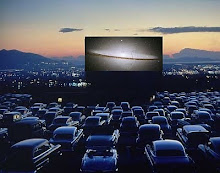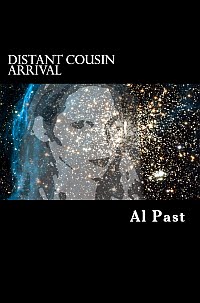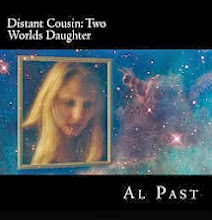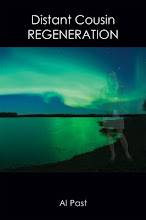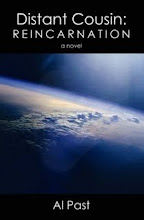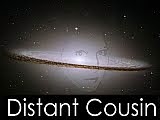Ana Darcy, our Distant Cousin, has never been able to say exactly how old she is. There are, as she has been known to state in several of her chronicles, just too many variables.
First, her home planet, Thomo, has days (and years) slightly different from ours. More importantly, Ana traveled twenty-five light years to return to her people's planet of origin, Earth, and she did so mostly at the speed of light.
As we know, Albert Einstein was the first to point out that time slows down as speed increases. Ana's interstellar vessel took approximately a year to accelerate to roughly 96% the speed of light, which it maintained until it began slowing down, taking approximately another year to do so.
A physicist friend tried to answer the question of how that might affect Ana's age by imagining twins, one traveling between Thomo and Earth, and one staying behind, and comparing the relative difference the traveler experiences. His answer is below. (He thanks Wikipedia for its help. let us note.)
If you are math-challenged, as Ana's chronicler is, this will seem like Greek to you, and you are excused. If you are adept at mathematics, then this might answer the question that even Ana cannot figure out, as good at math as she is.
Difference in elapsed time as a result of differences in spacetime paths
The following paragraph shows several things:
Let clock K be associated with the "stay at home twin". Let clock K' be associated with the rocket that makes the trip. At the departure event both clocks are set to 0.
- Phase 1: Rocket (with clock K') embarks with constant proper accelerationa during a time Ta as measured by clock K until it reaches some velocity V.
- Phase 2: Rocket keeps coasting at velocity V during some time Tcaccording to clock K.
- Phase 3: Rocket fires its engines in the opposite direction of K during a time Ta according to clock K until it is at rest with respect to clock K. The constant proper acceleration has the value −a, in other words the rocket isdecelerating.
- Phase 4: Rocket keeps firing its engines in the opposite direction of K, during the same time Ta according to clock K, until K' regains the same speed V with respect to K, but now towards K (with velocity −V).
- Phase 5: Rocket keeps coasting towards K at speed V during the same time Tc according to clock K.
- Phase 6: Rocket again fires its engines in the direction of K, so it decelerates with a constant proper acceleration a during a time Ta, still according to clock K, until both clocks reunite.
Knowing that the clock
K remains inertial (stationary), the total accumulated
proper time Δ
τ of clock
K' will be given by the integral function of
coordinate timeΔ
t
where v(t) is the coordinate velocity of clock K' as a function of t according to clock K, and, e.g. during phase 1, given by

This integral can be calculated for the 6 phases:
[15]- Phase 1

- Phase 2

- Phase 3

- Phase 4

- Phase 5

- Phase 6

where a is the proper acceleration, felt by clock K' during the acceleration phase(s) and where the following relations hold between V, a and Ta:


So the traveling clock K' will show an elapsed time of

which can be expressed as

whereas the stationary clock K shows an elapsed time of

which is, for every possible value of a, Ta, Tc and V, larger than the reading of clock K':
-
What's unusual about Ana's notion of language and math education?
A reader writes:
Very well written and includes interesting tidbits about foods, scenery, events, etc which add to the story. I found it hard to put down and then thinking about the story while doing other things. Loved his writing style and imagination.



















